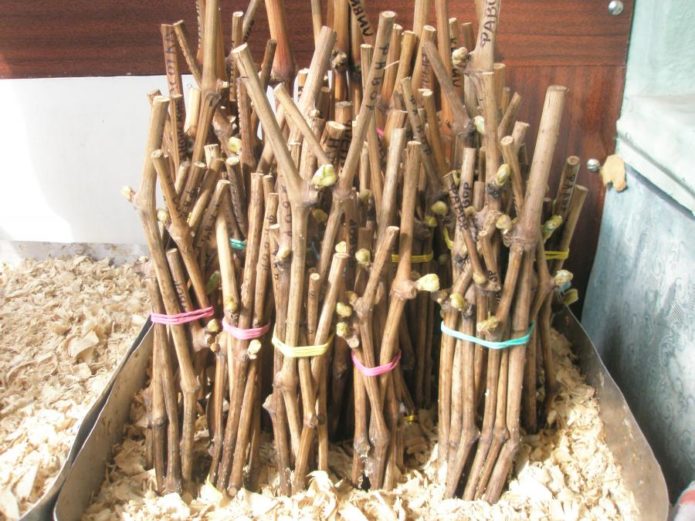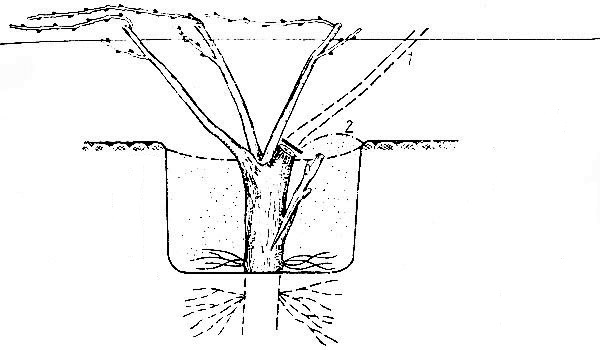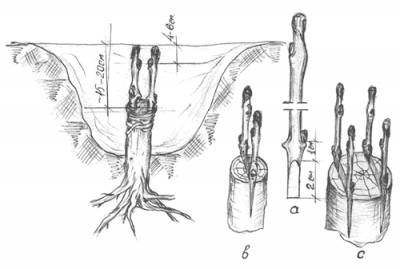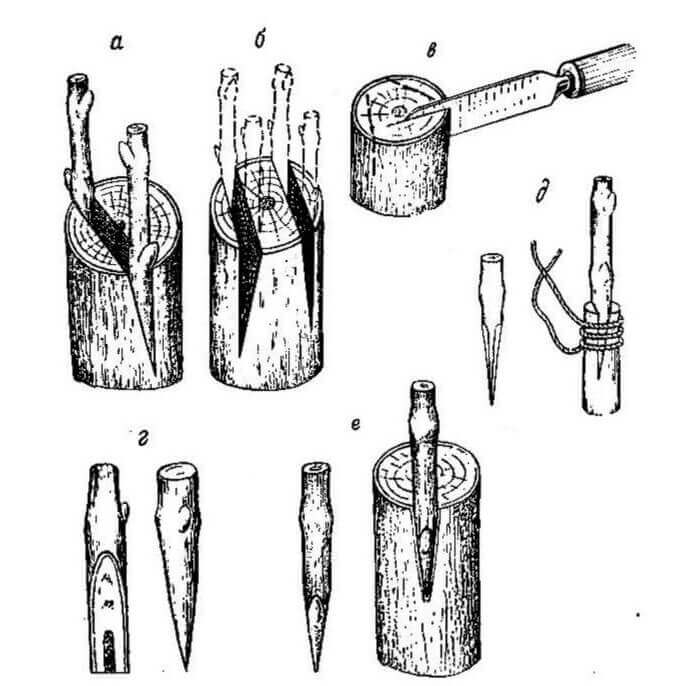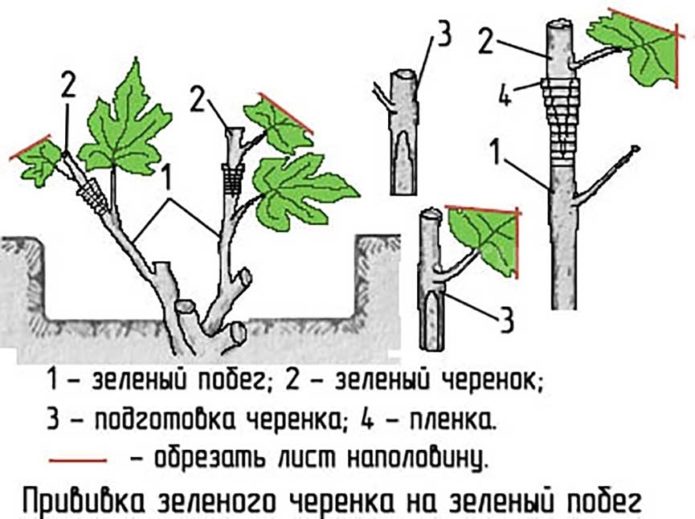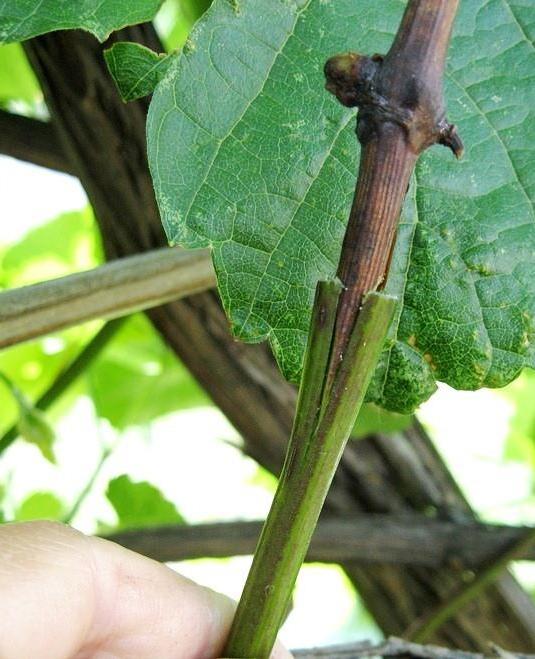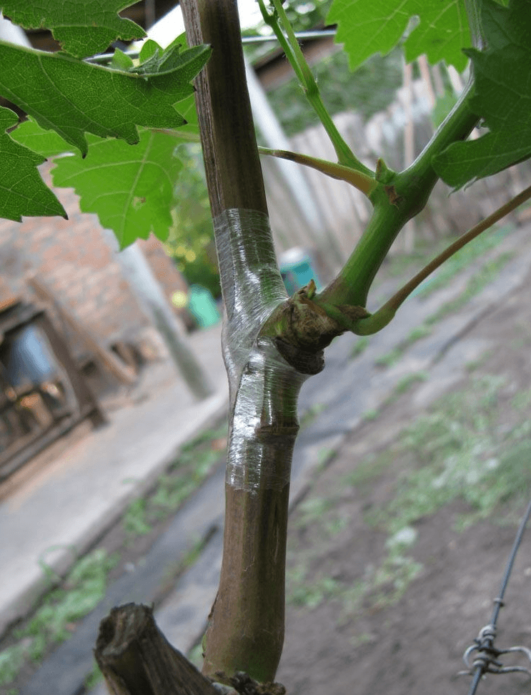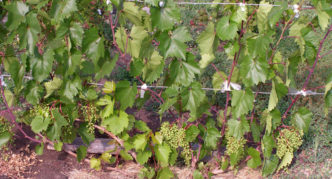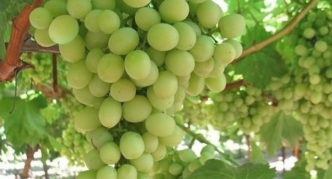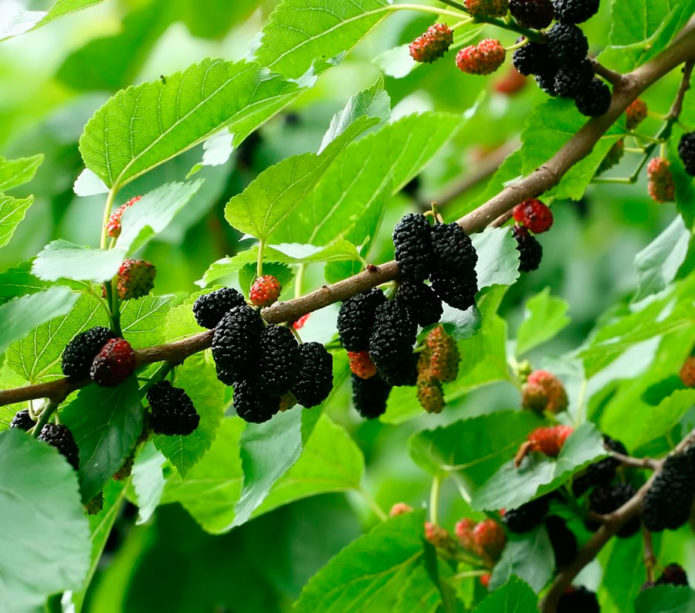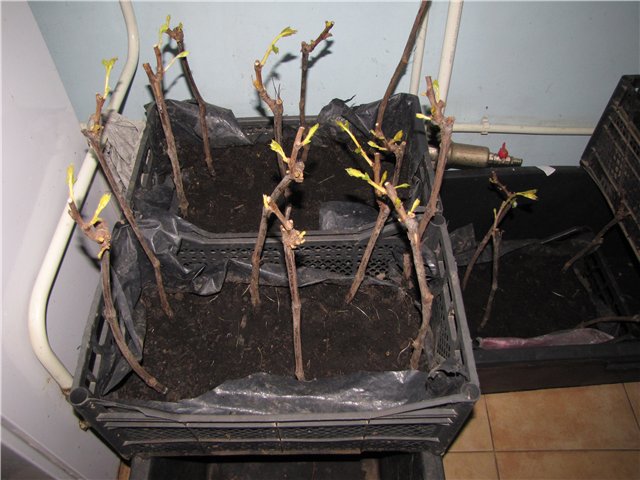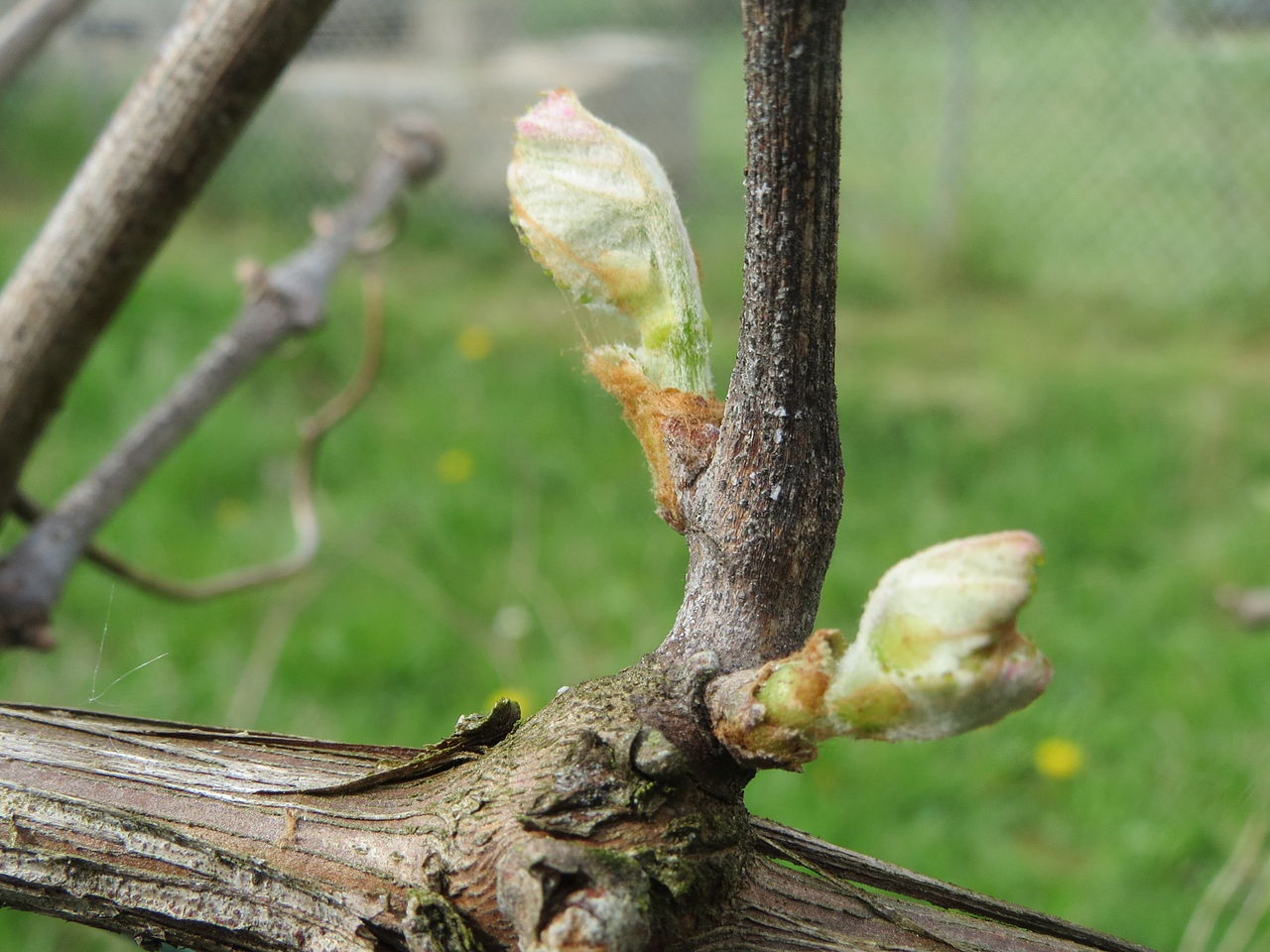Often, gardeners want to change the grape variety without waiting for the new bush to take root. The vaccination procedure comes to their aid. For a positive result from its implementation, you need to take into account many nuances.
Content
Preparing grapes for grafting
Grapes are planted for 3 reasons:
- The plant is more and more exposed to phylloxera infection. Grafting on a phylloxera-resistant stock is guaranteed to protect the future harvest.
- The gardener wants to plant as many varieties and hybrid forms of grapes as possible on his site. But digging up old bushes and planting young ones will take a long time. And the most valuable thing in the vineyard is the root. If it is healthy and strong, then a large number of new varieties can be tried on it.
- The grapes bear little fruit. If you vaccinate on a strong stock, the yield will improve significantly. Without additional investment and labor costs, you can get more berries from a grafted bush.
To achieve a good result, you must choose the right cuttings, prepare the vine and bush. The cuttings must meet certain parameters:
- be at least 8 mm in diameter;
- have at least 2-3 buds with eyes (beginning sprouts);
- tendril (a modified shoot with which the grape clings to the supports) at the lower node should fall off (the node is called the place where the leaves, inflorescences, buds and antennae are located), which indicates the maturity of the cuttings, due to which the survival rate increases;
- the node should be well developed, stiff;
- the distance below the first eye should be at least 5 cm, and above the last - about 2 cm;
- if you plan to plant several cuttings on one rootstock, then their section should be identical.
If cuttings are selected according to these parameters, then their survival rate will increase significantly.
It is also necessary to store the cuttings before grafting correctly. The best option is in a dark room with a temperature from -2 to +2aboutC. For example, in the cellar. You can store them in several ways:
- soak in cold water for several days;
- put in a wooden box, sprinkling with wet sand or sawdust;
- wrap in a cloth dampened with water.
Before grafting in the period from spring to autumn, the bush itself should also be prepared.
3-4 days before grafting a new grape variety, it is necessary to feed the vine. It must have a sufficient amount of nutrients.For this, it is better to use non-root feeding. It is worth choosing preparations with a high content of potassium and phosphorus. For example, Plantofol or Master.
Some gardeners use honey to feed the vines. They are smeared with branches and left for several days.
It is also necessary 5-7 days before the procedure:
- remove all young shoots, leaves and antennae from below and to the place of future grafting;
- water the shrub abundantly to achieve the required moisture level.
Video: harvesting grape cuttings
Vaccination methods
Many gardeners believe grafting of grapes difficult task. This opinion is due to the fact that not everyone succeeds in the procedure the first time. If you carefully study this topic and follow all the rules, then a positive result will not be long in coming.
There are many ways to plant grapes. You need to choose depending on the season.
Grafting on an old bush
Having been grafted onto a healthy and strong stock, you can get a harvest much earlier than when planting a young bush. The grafted plant will begin to bear fruit in 1–2 seasons, and the first full harvest can be harvested in the third year.
This method is good because any grape variety can be used for grafting. This is a significant plus for beginners in this business.
You can use this method in early spring, and late autumn, and even in summer. The main thing is that the air temperature is not lower than +15aboutC. In this case, the survival rate of vaccinations is very high. But it is better to harvest cuttings in the fall. At this time of the year, they accumulate a sufficient amount of nutrients, which contributes to better fusion.
Procedure:
- Before grafting, it is necessary to dig a hole around the rootstock bush to a depth of 20 cm and completely remove the part that was above the ground. Up to 4 cuttings can be grafted onto a thick stem (the part that remained after the removal of the aboveground bush).
- The cuttings should be sharpened with a wedge with a side of about 2 cm and an angle of 20-30about.
- The stem should be split with a knife by 3 cm and inserted along the edges of the cuttings. If you are planting 4 cuttings (the diameter of the stem should be at least 7 cm), then you need to make two splits, inserting 2 cuttings into each. It is important that at the same time the eyes of the grape scion and rootstock look in different directions.
- After that, it is imperative to tighten the grafting site with twine or a clamp so that the fabrics are pressed as tightly as possible.
- After the procedure, you need to fill the hole around the root with soil and water it well.
Further care consists in watering, loosening the soil and removing weeds. To obtain a harvest as early as possible, it is important to remove part of the top (pin) the vine one year after the scion.
Grape propagation methods, their features and tricks from experienced winegrowers:https://flowers.bigbadmole.com/en/yagody/vinograd/kak-razmnozhit-vinograd.html
Vaccination in the stem
This method is most often chosen when the variety is completely replaced on an adult plant. This method is considered radical, but even novice gardeners can do it. In this case, the aerial part of the vine is completely removed and replaced.
In this way, grapes are planted from the second half of autumn to March-April, depending on weather conditions.
In case of negative temperatures, vaccination should not be carried out. In central Russia, the optimal time for the procedure is in October-November or March-April. The autumn grafting differs from the spring method of shelter. In the spring, there will be enough light agrofibre to protect from the sun and nighttime cold snaps. And in the fall, you need to seriously cover the plant for the winter.
Tools that will come into contact with parts of the bush must be disinfected with alcohol. The process itself is divided into several stages:
- Similar to grafting on an old bush, remove all aerial parts of the grapes and dig a hole around the bush to a depth of 20 cm.
- Remove dry bark and old wood from the remaining stump with a knife.This is to avoid getting an infection.
- Using a small hatchet and hammer, make a longitudinal split 5–6 cm deep. This should be done carefully so that the bole does not split in other places. You can insert a wedge into the split so that it does not close, and start preparing the scion.
- Cut the stalk so that 4–5 cm remains below the kidney. Make a wedge-shaped cut with a sharp knife 3-4 cm long. Put it in a container of water and carry out the same manipulations with the second stalk.
- For a few seconds, you can place the grafts in a growth stimulator solution.
- Insert cuttings around the edges of the cleavage. Carefully remove the wedge so that the cuttings are fixed in the cleft.
- Fill the remaining gap with toilet paper soaked in water and cover with a small piece of cellophane.
- Wrap the stem around the circumference with a rope or braid made of cotton fabric. It is advisable to choose natural fabrics so that they decompose in the ground.
- Grease the grafting site with clay and cover it with soil for protection.
Video: grafting grapes into a stem
When buying a grafted seedling, you need to carefully examine it. There should be a noticeable tubercle at the junction of the scion and rootstock, if it is not there, the seedling is own-rooted, you should not overpay for it:https://flowers.bigbadmole.com/en/yagody/vinograd/kak-posadit-vinograd-vesnoy-sazhentsami.html
Black-on-black vaccination
This method is carried out in early spring, when both the rootstock and the scion buds have barely begun to bloom. Cuttings must be prepared in the fall and stored in wet sawdust or sand in the basement.
This vaccination is carried out for:
- obtaining several shoots from one root;
- increasing yields;
- increasing resistance to diseases, temperature extremes and pests;
- extending the life cycle of the bush.
Time of sap flow is optimal for black-to-black grafting. From the tools you will need a pruner and a sharp knife. Stages of work:
- The first step is to cut a few cuttings with good buds and check their viability. To do this, you need to put them in a container of water for several days. You should continue to work with those that have released green leaves.
- Choose a stock. He must be between 3 and 5 years old. It must be strong, resistant to disease and frost.
- With pruning shears, cut off the top 5 cm above the knot and remove all leaves. The place where the vaccination will be located should be disinfected with a solution of potassium permanganate. It should be located between the 2nd and 3rd nodes.
- Split the stock lengthwise by 3 cm and insert a stalk pointed on both sides with a wedge. Pull it off with a cotton cloth and cover with plastic.
Video: grafting grapes using the "black on black" method
Green-to-green vaccination
In the summer, the green-to-green method is most often used. To do this, a green shoot is grafted into a green vine. It is recommended to do this in May-June, when the shoots begin to grow intensively.
The bush must be prepared even in autumn or spring:
- Dig a hole around it.
- Remove the above ground part 6 cm below the soil level.
- Cover with garden varnish, cover with mulch and film on top to create a greenhouse effect.
When new cuttings grow 20-25 cm, cuttings of a new variety can be grafted onto them.
You need to leave 2 of the best shoots, and completely remove the rest. The day before grafting, the vine should be cut below the second node.
Procedure:
- Cuttings should be cut just before the procedure. One eye is enough for them.
- 1.5 cm below the peephole, you need to make a wedge-shaped cut and insert the cutting into the rootstock split.
- Wrap with plastic and grease with garden varnish.
During the summer, you need to monitor the bush and remove overgrown shoots.
Video: green-to-green vaccination
Some grape varieties, for example, Velika, are grafted onto other varieties by default for the simple reason that self-rooted plants grow too large:https://flowers.bigbadmole.com/en/yagody/vinograd/vinograd-velika-opisanie-sorta-foto.html
Black-on-green vaccination
Black-on-green grafting can be done throughout the summer. With him, a stiff shoot is inserted into the cleft of the green shoot.
Procedure:
- Prepare cuttings from autumn. So they will take root better on the rootstock.
- Before inoculation, they must be sharpened on both sides at a short distance (2-3 cm) from the kidney. You need to use only those on which the kidneys are attached. The best time to get vaccinated is when the sun is not very active, that is, early in the morning or in the evening. Otherwise, choose a cloudy day.
- For the stock, choose a healthy young vine and prune it. The diameter of the vine must be at least 3 cm. Split to a depth of 2-3 cm.
- Insert a shank pointed with a wedge into it and tighten with a cotton cord. Fix the film with the last layer so that it is located above and below the vaccination itself, but not on it. Thus, it will breathe, and the greenhouse effect will promote fusion.
Video: grafting grapes using the "black on green" method
Root grafting
To graft grapes into the root, you must adhere to the following procedure:
- Cut off the crown completely at the rootstock and leave the above-ground part no more than 10 cm. For this method, it is convenient to use a drill.
- Choose a place for grafting from the thickest side of the vine.
- Remove the bark and drill a hole with a scion diameter.
- Peel the stalk 2 cm from the bark.
- Insert into the rootstock hole and cover with garden varnish.
Video: grafting grapes into the root
Grape budding
Budding is not suitable for beginner growers, as it is important to choose a rootstock and a scion (eye) of equal diameter. Otherwise, the vaccine will not take root.
Procedure:
- The scion vine and bush must be cut obliquely, departing from the bud about 2 cm.
- Attach them to each other.
- Secure with cloth or other material and wrap with twine.
Video: budding grapes with eyes
Re-grafting of grapes
Winegrowers are often not satisfied with the taste of growing grapes. Digging a bush and planting a new one in its place is very unwise. It will take a long time before the first berries appear. Better to graft a healthy and powerful bush. Moreover, the harvest can be obtained already in the third year.
The procedure is carried out in late autumn and early spring. To do this, remove the aerial part of the bush completely. They are inoculated by the method into cleavage or "black to green".
Rootstock for grapes
Many grape varieties can be used for grafting. But only if there is no phylloxera in the region and unproblematic soils on the site. In other situations, varietal rootstocks are used:
- Kober BB;
- PP101-14;
- Ferkal;
- CO4;
- Andros;
- Phoenix;
- Dobrynya;
- Guarantee;
- Gift.
On these rootstocks, you can grow grapes in any conditions and on any soil.
Photo gallery: rootstocks for grapes
- Garant grape is a universal rootstock
- Present grapes are suitable for grafting in any conditions
- Kober grapes are used for propagation by grafting on different soils
- Phoenix grape is suitable as a rootstock for many grape varieties
- Dobrynya grapes are also considered universal for grafting.
Grafting of grapes on mulberry
You can plant grapes on a mulberry tree, or mulberry. They do this to increase yields. But the survival rate is low.
Procedure:
- Drill a through hole in the trunk of the mulberry.
- Insert a green vine into it, without cutting it off the bush.
- Cut off the vine from the mother bush when it takes root.
If done correctly, the grapes will grow and bear fruit safely on the mulberry tree.
Features of grafting grapes depending on the season
The timing of the vaccination is important.
Spring
Spring is the most active time for winegrowers. Sap flow begins from about mid-April. It was at this time that the survival rate is very high. Various methods are used for vaccination:
- "Black to black";
- into cleavage;
- budding;
- in the stem;
- to the root.
The procedure is carried out when the air warms up to +15aboutC and the threat of frost will pass. It is better to work early in the morning or in the evening. Scion cuttings are harvested in the fall.
Summer
Gardeners often plant grapes in the summer. Suitable months for this are June and July. A plus at this time of year is that the cuttings can be cut just before the procedure. Suitable methods are green to green or black to green.
The most important thing about summer vaccination is the weather. You should not do the procedure on a hot day. It is also undesirable to carry it out during the rain. It is better to choose a cloudy day with an air temperature no higher than +25aboutC. The optimal time is in the morning before 10 o'clock and in the evening after 6.
Autumn
At this time of year, grapes are most often grafted onto an old root in a stem or split. This allows you to significantly improve yields and get berries the next year.
The air temperature should not fall below +15aboutC. Most often it is October and early November, when there is still no night frost. Before grafting, the crop must be fully harvested and most of the leaves turn yellow.
Winter
In winter, grapes can also be planted. This method is called table vaccination. It is held in February-March. Usually they use young bushes 1–2 years old.
Procedure:
- Dig up the bushes in the fall and cut them off. It is enough to leave a 10-centimeter stem.
- Disinfect them with a solution of potassium permanganate.
- Place in a container, sprinkle with sawdust or sand and lower into the basement. Scion cuttings must also be prepared in the fall.
- The day before vaccination, take them out of the cellar and put them in water at a temperature of + 15 ... + 20aboutFROM.
- Without taking it out of the water, inoculate into the cleft.
- Leave the bush for 3 weeks at room temperature. At this time, new shoots must be removed. After that, it can be removed from the water, covered with sand and lowered into the basement.
You can plant grapes in open ground when the air warms up to +15aboutFROM.
Video: table grape grafting
Tips for beginners
Grapes are grafted to increase resistance to diseases, to obtain new varieties. For a positive result, certain rules must be followed:
- the stock must be immune to diseases common in the region;
- varieties you need to choose the most suitable for this area;
- for grafting in winter and spring, scion cuttings must be harvested in autumn, and in summer and spring, you can work with fresh branches;
- the stalk should be cut perpendicular to the growth "away from you" so that the cut does not turn out to be concave;
- it is necessary to use a very sharp knife, which can be previously disinfected with fire, alcohol or potassium permanganate;
- the air temperature should rise above +15aboutFROM.
After the scion has taken root, it is necessary to ensure proper care for it. If you have any questions, it is better to seek help from experienced people. Due to improper actions, not only the scion, but also the root can suffer.
